Discover the top customer experience trends for 2025. Learn how AI, personalization, and trust are reshaping CX and driving business growth.
In 2025, customer experience (CX) is the heartbeat of business strategy.
As the world navigates a post-pandemic economy, rising digital expectations, and rapid advances in AI, the bar for what constitutes “great service” has never been higher. Today’s consumers don’t just want faster responses – they want personalized, respectful, and emotionally intelligent experiences across every touchpoint.
This in-depth guide explores the most critical CX trends shaping 2025, backed by the latest research and examples from leading global brands. Whether you’re a C-suite executive, CX strategist, or technology leader, this is your roadmap to building not just better service – but stronger, more resilient customer relationships.
AI and Automation Reshape Customer Engagement
Generative AI Transforms Customer Service
Artificial intelligence, particularly generative AI powered by large language models, is transforming customer service across industries in 2025. Over 80% of companies are either already using or planning to adopt generative AI for customer interactions (McKinsey). These tools are being integrated into everything from chatbots and automated email responders to agent-assist systems.
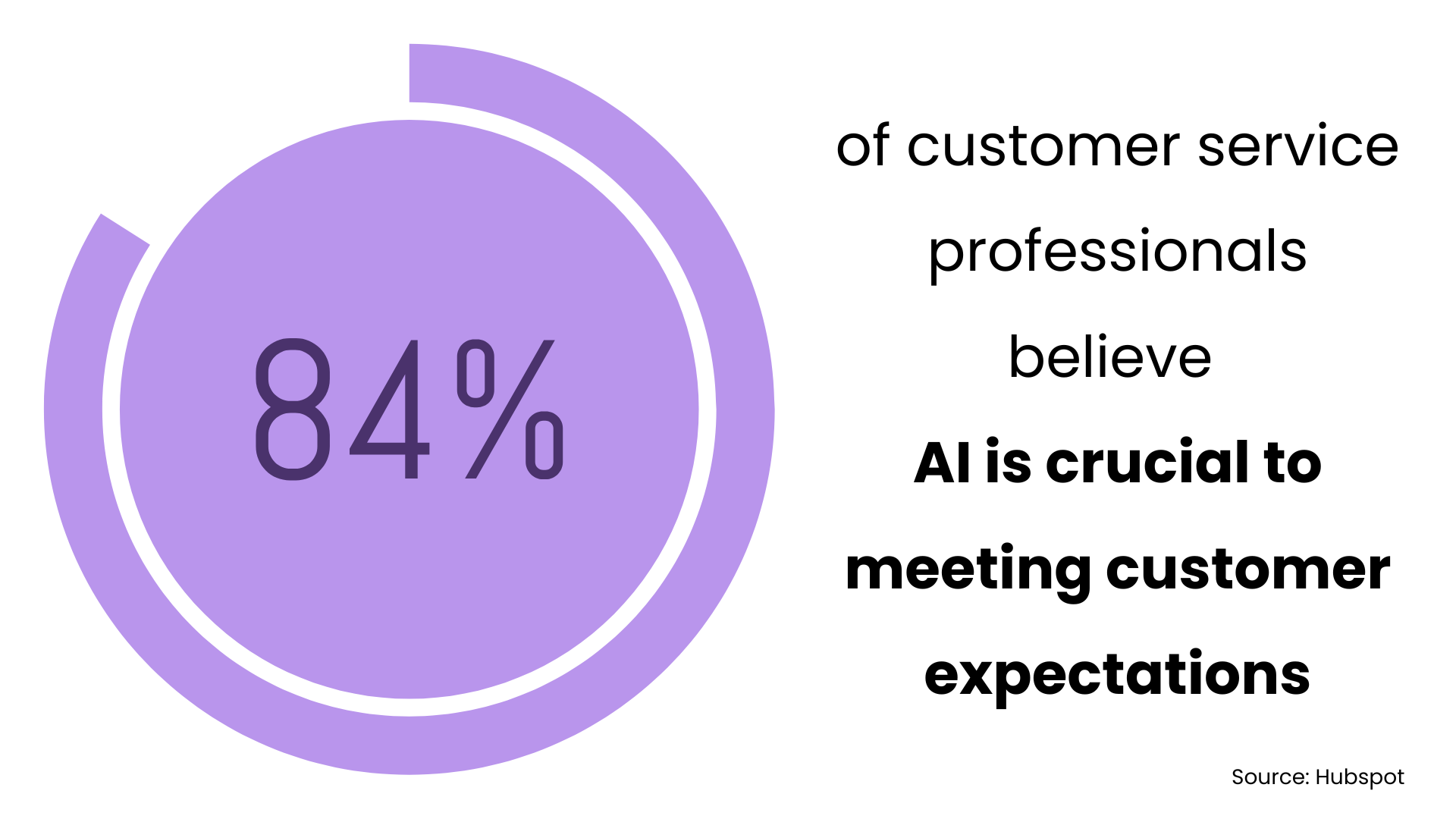
The results are already visible. One global bank’s subsidiary replaced its legacy rule-based chatbot with a generative AI model and reported a 20% increase in successfully answered queries within just seven weeks (McKinsey). Many CX leaders are going a step further, envisioning that nearly all customer interactions in the near future will be AI-enabled-powered by a combination of virtual agents, AI-driven analytics, and voice assistants.
This shift isn’t limited to one sector. Banks are using AI to manage routine queries, retailers are leveraging AI for product recommendations and customer support, and hospitals are experimenting with AI triage bots. The aim is consistent: faster, scalable, round-the-clock service.
Automation Boosts Efficiency in Contact Centers
Automation is driving major efficiency gains in contact centers in 2025. Generative AI is automating a significant portion of routine support requests, impacting the traditional customer service outsourcing model. According to Forrester, AI will displace around 100,000 frontline contact center jobs at major outsourcing firms as low-complexity issues become increasingly automated (Forrester).
Rather than relying solely on inexpensive labor, companies are turning to intelligent bots and self-service portals that can resolve customer issues immediately. Gartner forecasts that by 2027, chatbots will be the primary customer service channel for roughly 25% of all organizations
Performance improvements are already being realized. In a recent survey, 80% of business executives reported measurable improvements in customer satisfaction, service delivery, and contact center performance after adopting conversational AI tools
Moreover, companies are shifting their KPIs-from call volume handled to value-driven outcomes like customer retention and upsell success. This marks a strategic pivot from volume metrics to service impact.
Balancing AI Innovation with the Human Touch
Despite the rapid rise of AI, human connection remains vital in customer experience. AI is most powerful when it augments, not replaces, human interaction. This is especially true for emotionally charged or complex service scenarios. Surprisingly, Gen Z customers are 30–40% more likely to contact a human agent by phone than Millennials and engage with phone support as frequently as Baby Boomers (McKinsey). Live phone support continues to be essential across generations, even as digital self-service grows.
Leading brands understand this balance. They use AI to retrieve information and manage routine interactions, freeing human agents to handle high-empathy or complex conversations. Customers are quick to abandon companies after just one poor experience, so ensuring high-quality service is critical (Adrian Swinscoe).
However, customer attitudes toward AI-only service are mixed. Only 47% believe generative AI will improve the communication they receive, and 66% express concerns about data privacy and security (Adrian Swinscoe). To mitigate these concerns, companies are being transparent about how AI is used and ensuring smooth escalation to human agents when necessary. Currently, only about half of CX leaders believe AI enhances the quality of human connection in service delivery (Deloitte Digital).
To close this gap, organizations are investing in agent training and reconfiguring workflows to ensure humans and AI work collaboratively. The real frontier of customer experience is not a battle between humans and AI-it’s their partnership. The ideal outcome is faster, scalable service that retains empathy and personal connection, ultimately building deeper trust with customers.
Discover Kayako’s human-AI harmony.
Hyper-Personalization and Data-Driven Insight
First-Party Data Fuels Personalization
As third-party cookies phase out and privacy regulations tighten globally, businesses are refocusing their customer data strategies in 2025. The emphasis is now on first-party and zero-party data – information customers voluntarily share, such as preferences, interests, and behavioral signals. Leading companies understand that hyper-personalization depends on clean, consent-based data.
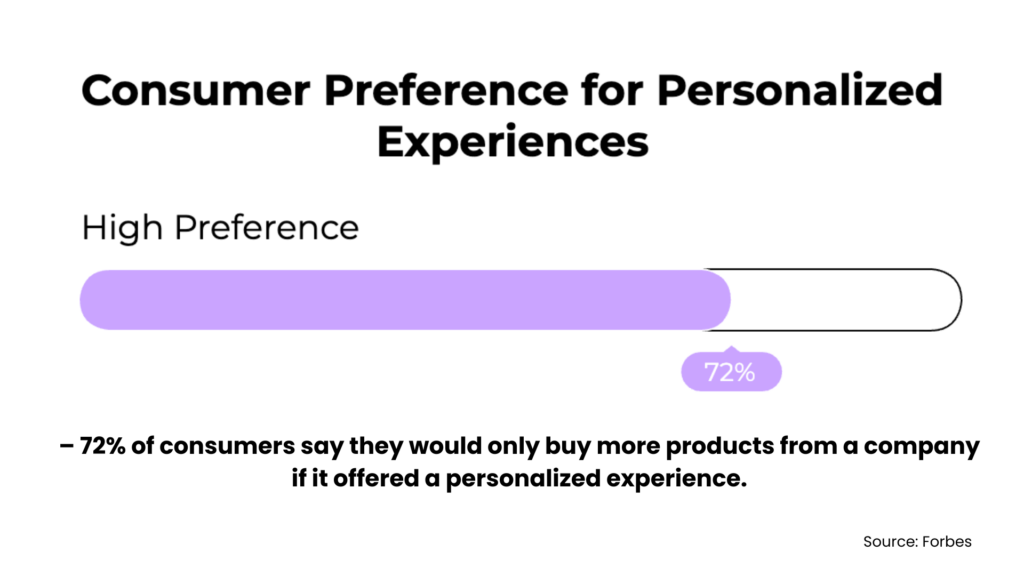
To collect this data, businesses are investing in loyalty programs, interactive surveys, and preference centers. The goal is to build customer profiles using data that customers willingly provide. But collecting data isn’t enough – it must also be clean, centralized, and actionable. As experts remind us, “garbage in, garbage out.” Only clean data enables effective personalization at scale (Adrian Swinscoe).
Retailers, for instance, are merging online and offline customer data to create unified profiles, while banks are integrating information across products to present a single customer view. Importantly, privacy remains a top concern. According to PwC, 83% of consumers believe protecting their personal data is crucial for trust, and 80% want assurance that their data won’t be shared without consent (PwC). Top brands are therefore making privacy a design priority – openly communicating how customer data will be used and demonstrating the benefits of sharing it.
Real-Time Insights and Predictive CX
With robust first-party data and advanced analytics, businesses are now personalizing customer experiences in real time. A significant 85% of consumers expect companies to anticipate their needs proactively (Invoca). This shift toward predictive customer experience is transforming how brands engage their audiences.
Machine learning models now analyze past interactions, browsing history, location, and real-time behavior to deliver what the customer needs next. Whether it’s offering a personalized discount or flagging a potential service delay, companies are becoming proactive rather than reactive.
Traditionally tech-forward industries like streaming and e-commerce have long mastered these tactics. But in 2025, even slower-moving sectors are catching up. Insurers use AI to tailor policy offers. Healthcare providers personalize outreach based on patient data. And Amazon’s “Rufus” – a generative AI assistant – helps customers ask product-specific questions and receive real-time, personalized answers (Adrian Swinscoe). This level of just-in-time personalization not only boosts conversion but also reinforces customer trust by showing the brand understands their needs.
Each personalized interaction also generates valuable feedback, feeding into a virtuous cycle of improved data and deeper personalization.
Personalization Across Industries
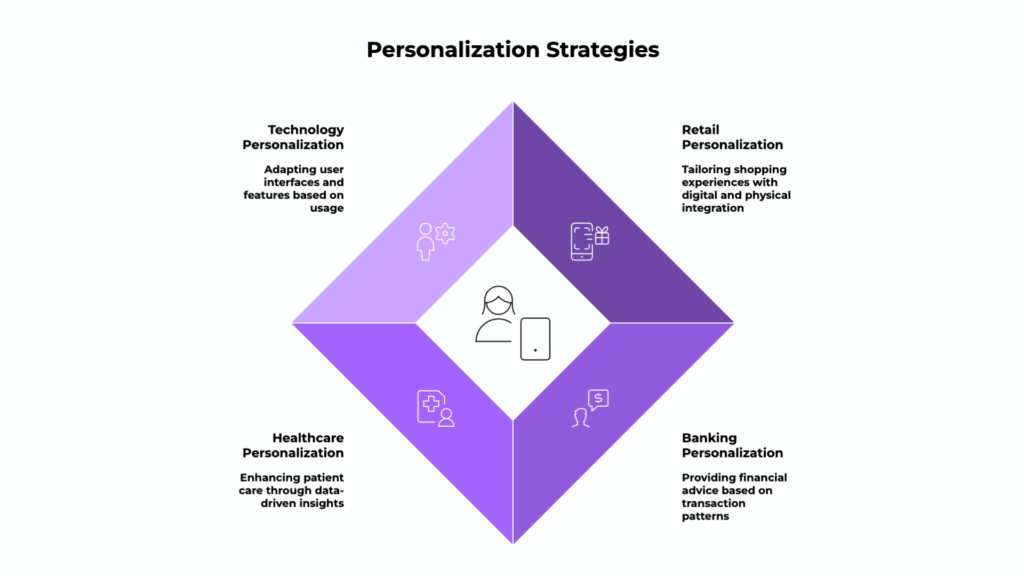
Hyper-personalization has now become a cross-industry standard, though each sector applies it differently:
- Retail blends physical and digital: Apps greet customers by name in-store, recommend products based on past behavior, and deliver real-time coupons through loyalty integrations.
- Banking provides data-driven advice: Transaction patterns inform financial recommendations, pre-approved loan offers, and budgeting tips tailored to individual customer circumstances.
- Healthcare uses patient data for custom journeys: From sending condition-specific educational content to scheduling check-ins based on behavioral trends, personalization helps improve outcomes.
- Technology firms customize user interfaces and features: Platforms use telemetry data to adapt dashboards, notifications, or settings based on how each user interacts with the product.
In banking specifically, Accenture found that institutions with the strongest customer advocacy – a proxy for CX excellence – grow revenue 1.7× faster than peers and achieve up to 2.6× growth in North America (Accenture). Loyal customers hold 17% more products with their primary bank, increasing share-of-wallet significantly.
Yet, customers expect personalization without being creeped out. Brands must balance relevance with transparency. Nearly 75% of customers say they’re more likely to buy from brands that offer relevant, personalized experiences – but only if those experiences feel respectful, not intrusive (Invoca).
The message is clear: when personalization is done right – with consent, clarity, and genuine value – it becomes a key differentiator in customer experience.
Omnichannel Journeys and the Human Touch
Resurgence of Voice and Human Support
In an era dominated by digital interfaces, the humble phone call is making a surprising comeback. While customers increasingly rely on live chat, self-service, and messaging apps, voice support remains a critical piece of the CX puzzle in 2025 – particularly for emotionally charged or complex situations.
Contrary to popular belief, even younger generations value human conversation. Gen Z customers are 30–40% more likely to call a service agent than Millennials, and they use phone support just as much as Baby Boomers (McKinsey). When stakes are high – such as resolving billing errors or making major financial decisions – voice offers the immediacy and empathy that digital channels often lack.
Far from fading, voice is expected to surge in usage this year. To meet rising demand, top brands are doubling down on voice capabilities. But they’re not just adding more agents – they’re empowering those agents with real-time AI tools that provide contextual recommendations, previous customer history, and even tone guidance during calls. This hybrid approach – blending human warmth with AI efficiency – ensures that every voice interaction feels fast, informed, and human.
Seamless Cross-Channel Integration
Today’s customers don’t engage in linear, single-channel journeys. They browse on mobile, switch to desktop for purchase, chat with support on the website, and sometimes follow up in-store or on the phone. They expect all these interactions to be integrated and contextual.
A full 70% of customers now expect that any agent or support channel they contact will have complete visibility into their past interactions – regardless of where those took place. This means a customer who begins with a chatbot and later calls the hotline doesn’t want to repeat themselves.
To meet this demand, companies are integrating CRM systems, communication platforms, and customer databases to break down silos. Real-time data sharing across touchpoints is essential to create a continuous, “memory-rich” experience. And it’s worth the effort: companies with strong omnichannel capabilities see significantly higher customer satisfaction and retention than those with fragmented support systems.
Channel preferences are also situational. A customer might prefer self-service for resetting a password but want a live agent to dispute a charge. The most successful companies in 2025 are the ones offering full channel choice – chat, email, phone, app, social media – and letting the customer lead the way.
This need for flexibility intensified during the pandemic years when customers were forced to switch channels quickly (from in-store to curbside pickup, or from clinic visits to video consultations). Now, those expectations are here to stay. Omnichannel isn’t just about presence – it’s about consistency, memory, and effortless transitions across channels.
Phygital and Industry-Specific Journeys
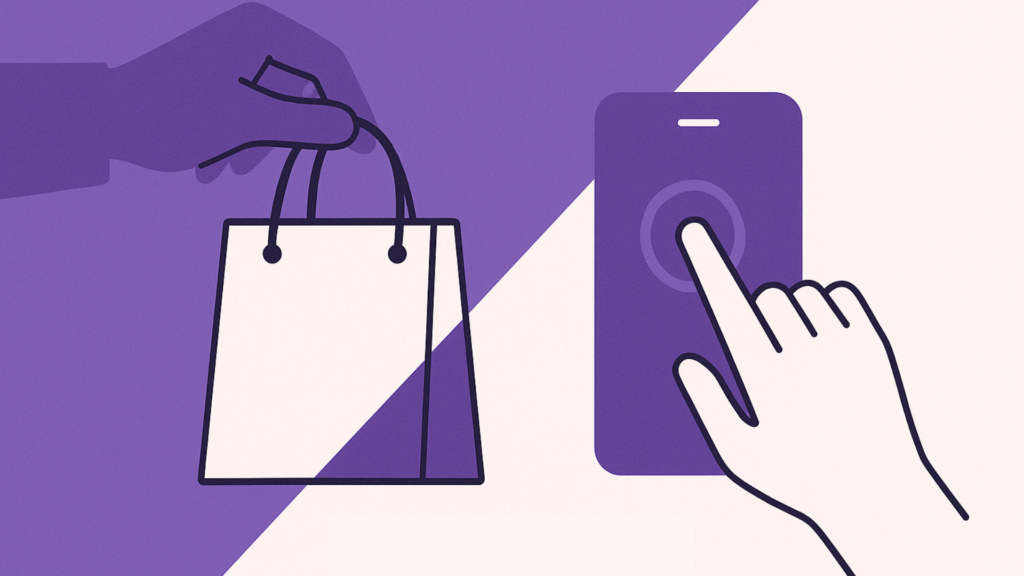
One of the most exciting CX trends in 2025 is the rise of “phygital” – the seamless blending of physical and digital experiences.
- Retailers are transforming stores into experience centers. Customers might scan a QR code in-store to view product reviews, use apps to find inventory, and check out via contactless payment – all part of one fluid journey.
- Banks are evolving branches into advisory hubs. Customers schedule appointments via app, then meet with staff who can pull up their full digital profile on a tablet. The experience feels cohesive, not disconnected.
- Healthcare integrates chatbots, video consultations, and in-person visits – all connected by a single patient record. This streamlines care and reduces friction.
Consistency is critical. For example, a recommendation made online should be remembered when the customer walks into a store. Leading companies use journey mapping and unified profiles to ensure that data and experience travel with the customer, regardless of the channel.
To achieve this, many organizations are investing in cloud-based contact center platforms, unified data lakes, and integrated journey orchestration tools. The result? Every physical location and digital interface becomes a real-time data goldmine, informing not only CX but also marketing, product design, and operations (Adrian Swinscoe).
When done right, omnichannel becomes a strategic asset – helping brands serve, understand, and delight their customers more deeply and more personally.
Master omnichannel with Kayako.
Customer Trust, Privacy, and Ethical Experience
Building Trust Through Reliability and Honesty
Technology and personalization alone won’t win customer loyalty if the foundation of reliability is shaky. In fact, many organizations in 2025 are rediscovering a powerful CX differentiator: doing what they say they’ll do.
Customers care more about clear, honest communication and consistent delivery than flashy features. If a product isn’t available, if there’s a delay, or if a mistake is made – customers expect to be told promptly and truthfully.
|
This is particularly true in high-stakes sectors like utilities and finance, where a missed service promise can lead to immediate customer loss. Companies are investing in frontline training to ensure agents don’t overpromise, in marketing that avoids unrealistic expectations, and in customer journeys that are designed to be consistent and repeatable.
Some organizations are even measuring trust explicitly through brand integrity scores and “trust KPIs” – elevating it to the level of core business metrics. As Qualtrics CEO Zig Serafin put it, trust is the real differentiator in today’s market – more enduring than the latest innovation (Adrian Swinscoe).
Ethical AI and Inclusive Design
The ethical deployment of AI has emerged as a top concern in 2025, as automation becomes embedded in everyday customer interactions. Customers want to know that AI tools are used responsibly, decisions are explainable, and no one is being unfairly disadvantaged by algorithms.
Two-thirds of consumers have concerns about AI security, and 63% express ethical concerns about how businesses are using AI in their interactions (Adrian Swinscoe). In response, forward-looking companies are adopting clear frameworks for ethical AI use. This includes:
- Disclosing when an AI system is in use.
- Allowing easy hand-off to a human agent.
- Ensuring algorithms are tested for bias and regularly audited.
- Providing transparency into how recommendations are generated.
At the same time, accessibility and inclusivity have moved to the forefront. The European Accessibility Act’s June 2025 deadline has accelerated investment in making digital experiences accessible – from screen-reader support and contrast standards to voice interfaces and multilingual support (Forrester).
Yet, many companies still fall short. Forrester warns that only about half of accessibility efforts will meaningfully improve CX by 2025, with others limited to surface-level compliance through plugins or overlays (Forrester). True inclusion requires co-design with diverse user groups, universal design principles, and deep integration into the product development lifecycle.
The best CX leaders go beyond regulation. They understand that an app with voice control can help users with disabilities – and also busy parents or drivers. Inclusive design broadens access, improves usability for all, and signals to customers that the brand respects and values everyone.
In 2025, trust is built not just through what companies promise, but how ethically and inclusively they deliver it.
CX as a Growth Driver and Differentiator
Linking Customer Experience to Revenue Growth
In 2025, customer experience is no longer seen as a soft function – it’s a measurable, strategic lever for business growth. Companies that lead in CX are outperforming their peers financially, with clear data to back it up.
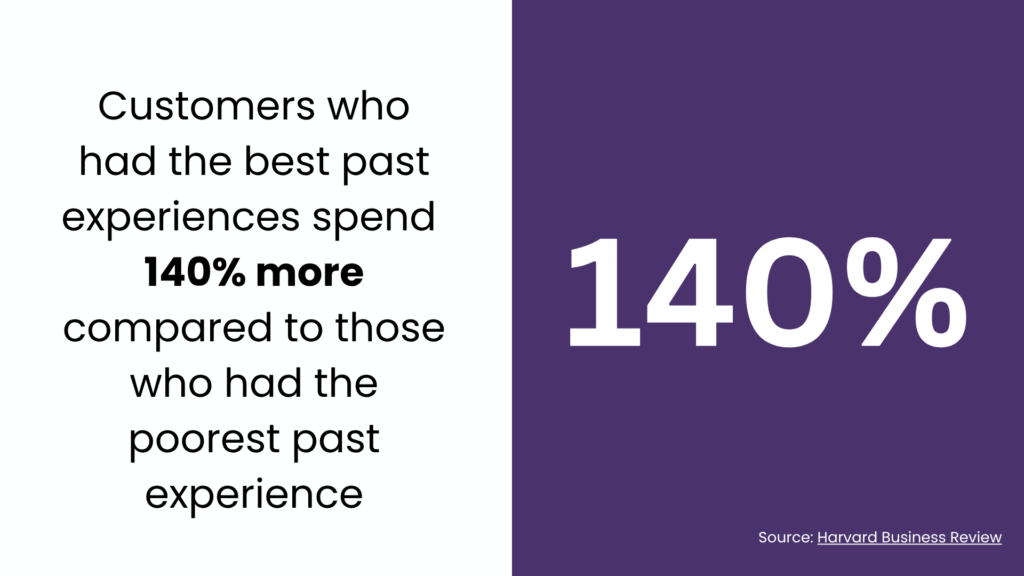
According to Forrester, 41% of customer-obsessed organizations – those that prioritize CX at the highest level – achieved 10% or more revenue growth in the last fiscal year. In contrast, only 10% of CX laggards saw similar growth.
The correlation is equally strong in banking. Accenture reports that institutions with the highest customer advocacy scores grow revenue nearly 1.7x faster than competitors, and as much as 2.6x faster in North America (Accenture). These same banks benefit from deeper relationships – their loyal customers hold 17% more products with their primary institution, boosting lifetime value and share of wallet.
Across industries – from retail to SaaS – CX leaders enjoy stronger cross-sell, higher repeat purchases, and greater customer advocacy.
Internally, this is translating into budget wins: companies that can link CX metrics like satisfaction or NPS directly to business outcomes are 29% more likely to receive increased investment in CX initiatives.
In short, exceptional CX doesn’t just delight customers – it drives measurable financial performance.
Customer Loyalty, Retention, and Lifetime Value
Customer experience is now one of the strongest predictors of loyalty – and loyalty is what drives sustainable revenue. Consumers have more options and higher expectations than ever before. If a brand disappoints them, they won’t hesitate to leave.
Nearly 49% of consumers say they abandoned a brand they were previously loyal to in the past year due to a poor customer experience. That kind of churn is expensive. In the U.S. alone, it’s estimated that $1.6 trillion in revenue is lost annually from customers switching brands after bad service (Invoca).
Conversely, great experiences keep customers around – and even allow brands to charge more. Research shows that consumers are willing to pay a premium of up to 16% for products and services when they know they’ll receive excellent customer experience (Invoca).
Speed and effectiveness matter, too. Customers are 2.4× more likely to stay loyal to a brand if their issue is resolved quickly and effectively. As a result, businesses are shifting from acquisition-centric models to lifecycle-focused CX strategies that nurture trust, satisfaction, and retention across onboarding, support, billing, and renewal.
In subscription-based and B2B industries, even a small increase in retention can have a massive impact on profitability – which is why metrics like churn rate, customer effort score, and NPS are now C-suite-level KPIs.
CX isn’t just a differentiator – it’s a loyalty engine.
Value and Empathy in Economic Uncertainty
Economic pressures in 2025 – from inflation to cautious consumer spending – are testing brand loyalty in new ways. In times of uncertainty, customers become more discerning. They want to feel like the brands they choose are on their side, offering not just products, but real value and empathy.
|
Some companies, in an effort to protect margins, have resorted to cost-cutting tactics like “shrinkflation” – offering less product for the same price. But these strategies often backfire, eroding trust and CX in the long term (Adrian Swinscoe).
In contrast, CX leaders are responding by leaning into support. They’re launching loyalty programs with meaningful perks, providing flexible payment options, and using AI to help customers find the best deals.
- Retailers like Amazon are deploying AI shopping assistants that guide customers toward the most cost-effective options – a small but high-impact way to show value.
- Consumer goods brands are offering receipt-scanning apps to power cashback programs, helping customers save while collecting valuable first-party data.
- Grocery chains are enhancing budget product lines and streamlining in-store experiences to reduce friction and support frugal shopping behaviors.
These moves send a powerful message: “We understand your challenges, and we’re here to help.” And customers remember that empathy. Surveys show consumers are more loyal to brands that are transparent, fair, and helpful during tough times.
By showing up for customers when it matters most, companies earn goodwill that outlasts economic cycles. In 2025, value and empathy aren’t just nice-to-haves – they’re key pillars of competitive customer experience.
CX as the Foundation of Sustainable Growth
The customer experience landscape in 2025 is being redefined by a powerful convergence: smarter technology, richer data, rising customer expectations – and a renewed focus on trust and empathy. Across industries, businesses are no longer treating CX as a support function. It’s now a core business strategy, directly tied to revenue, retention, and reputation.
Leading companies are embracing generative AI and automation not as cost-cutting tools, but as enablers of better, faster service. They’re using first-party data not just to personalize offers, but to build relationships. They’re designing omnichannel journeys that are fluid, human-centered, and consistent. And crucially, they’re doubling down on trust – making data privacy, ethical AI, and honest communication central to how they operate.
The playbook for 2025 is clear: use AI to scale, but don’t lose the human touch.
Personalize with purpose, not intrusion. Make every interaction count – not just in the moment, but in the relationship it builds.
Because in the end, customer experience isn’t just a differentiator. It’s the business.